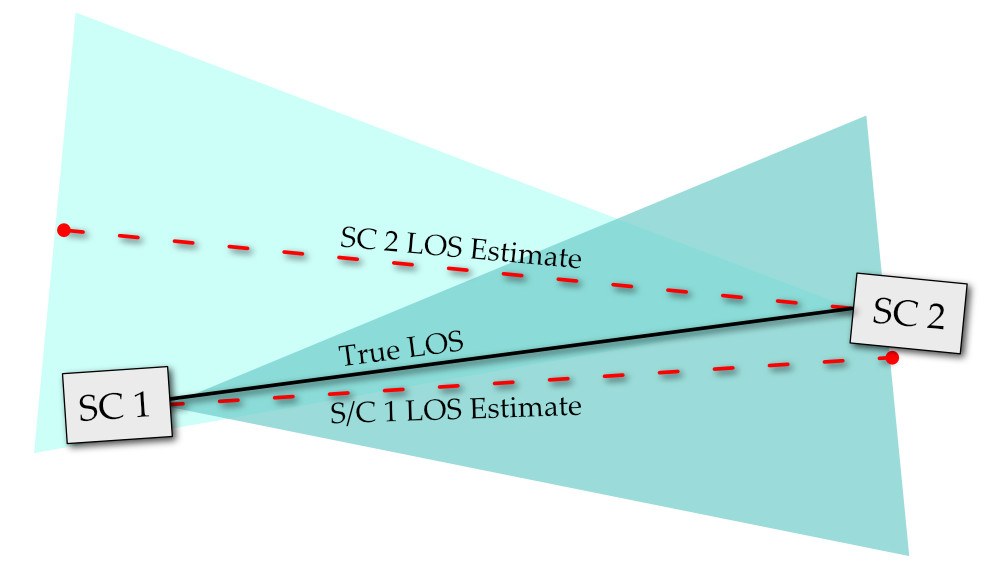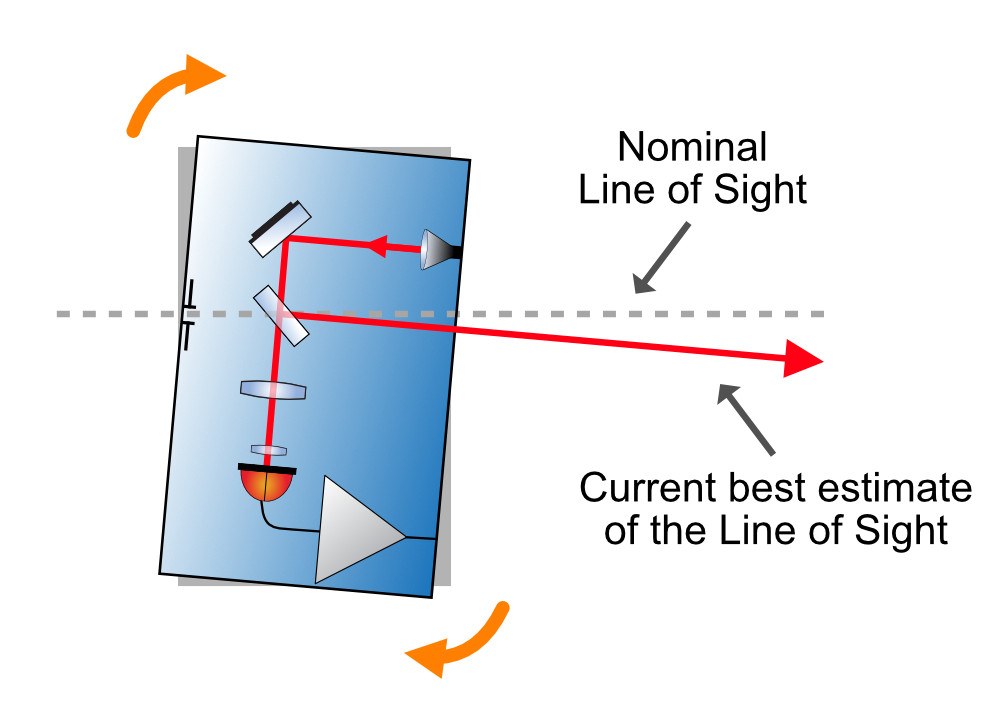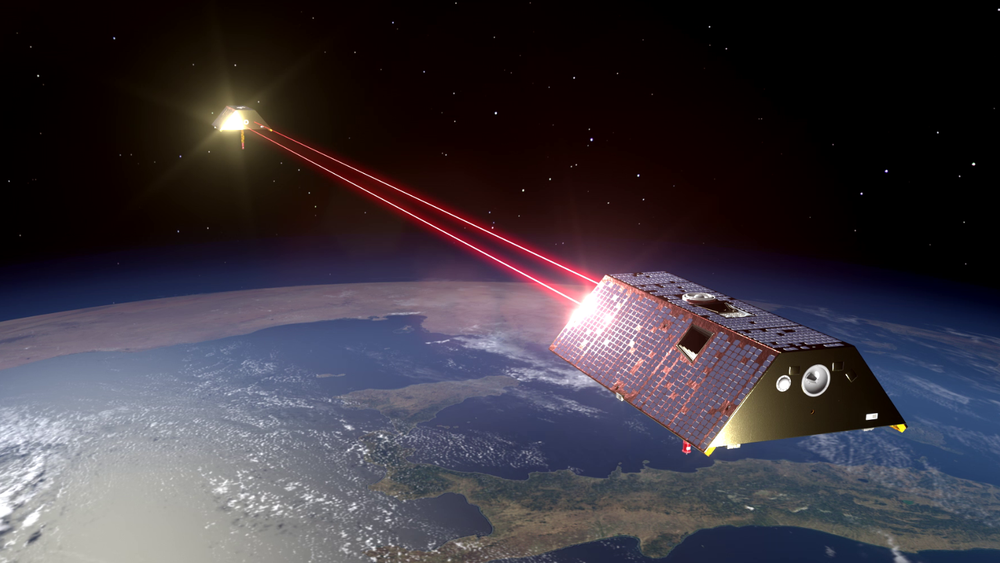NGGM Phase A Study
The launch of the GRACE-Follow-On mission (GRACE-FO) in May 2018 ushered in a new era in satellite geodesy by using, for the first time, a laser interferometer with previously unattainable sensitivity with respect to the measurement of intersatellite distance changes. The Institute for Satellite Geodesy and Inertial Sensing is participating in an ESA Phase A study of a successor mission for the GRACE-FO mission as part of a consortium led by Airbus Defense and Space: The Next Generation Gravity Mission (NGGM). In this context, the institute is analyzing and developing laser link acquisition procedures and dedicated sensor technology to make the process even more robust, to accelerate it and to minimize the associated risk.
In the context of the ESA Phase A Study on a Next Generation Gravity Mission (NGGM) das Institute for Satellite Geodesy and Inertial Sensing is investigating potential procedures as well as dedicated hardware systems that could be used to ease and mitigate risk during the process of laser link acquisition.

With the launch of the GRACE Follow-On (GRACE-FO) mission in May 2018 a new era in satellite geodesy missions was ushered in as the GRACE-FO spacecraft introduced for the first time an inter-satellite laser interferometer. This Laser Ranging Interferometer (LRI) was designed to surpass the precision of the at the time state-of-the art microwave ranging instrument by orders of magnitude. In 2019 first results from LRI measurements were published, prominently presenting a ranging noise level of about 1nm/rtHz at a Fourier frequency of 0.1 Hz, surpassing the LRI ranging noise requirement of 80 nm/rtHz at this frequency. Hereby the LRI paved the way for future gravity missions that would fully rely on a laser-based measurement of the inter-satellite range
One such mission which is currently being studied is ESA's NGGM mission of opportunity. The main scientific goal of this mission is the monitoring of the temporal variations of Earth’s gravity field at an enhanced resolution in time and space in comparison to GRACE-FO. NGGM will observe Earth mass change processes and in doing so monitor hydrology, cryosphere, oceanography, solid Earth, consequently delivering vital information on climate change processes.

As part of a consortium that is led by Airbus Defence and Space, the institute is responsible for the laser link acquisition system. A link acquisition procedure is required for the initial establishment of the laser link, as well as for later re-initialisation procedures in case of the loss of the interferometric signal, e.g. caused by environmental disturbances or considerable orbit manoeuvres. The main task during link acquisition is the identification of static and dynamic misalignment angles between the true line of sight (LOS), the connecting line between the two spacecraft, and the current best estimate of the LOS. Additionally, laser frequency differences between the lasers on the two spacecraft need to be calibrated. LOS estimation errors are inevitable. The main contributors are manufacturing and alignment tolerances of sub-systems of the laser ranging instrument, ground-to-orbit deformations of the spacecraft structures as well as settling effects caused by the rocket launch.

